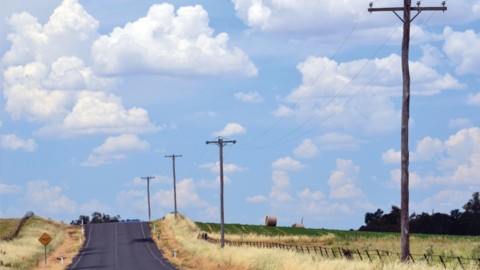The Federal Government is holding firm to its commitment for a gas-fired recovery from the COVID-19 pandemic, using the 2021-22 Federal Budget to promise more investment to unlock gas sources and drive down prices.
In total, more than $1.8 billion has been allocated in the 2021-22 Budget for the energy sector. The Federal Government has been keen to highlight the $58.6 million for the gas sector; but the lions share of the energy industry’s allocation has gone towards emissions reduction, with more than $1.2 billion allocated to this space.
Federal Minister for Energy and Emissions Reduction, Angus Taylor, said the Budget is supporting the Federal Government’s responsible and pragmatic approach to energy policy and emissions reduction, setting Australia up for a post-COVID world.
“Our 2021-22 Budget measures will provide reliable, secure and affordable energy to all Australians, and increase investment in technology solutions to reduce emissions in a way that supports jobs and economic growth,” Mr Taylor said.
“These initiatives will secure Australia’s recovery while also bolstering our position as a leader in the development of low emissions technologies, which are vital to achieving net zero emissions globally.
“Australia is focused on investing in commercialising technologies, not harmful taxes, in the global effort to reduce emissions. Our 2021-22 Budget measures continue this approach, while strengthening our energy security and supporting the growth of new industries and jobs into the future.”
Electricity
The Federal Government is continuing its commitment to maintain affordability, reliability, and security in the electricity system. 2021-22 initiatives include:
- A $24.9 million package to assist new gas generators become hydrogen-ready
- Up to $30 million for early works on Australian Industrial Power’s (AIP) Port Kembla gas generator project
- $30 million to support a big battery and the roll-out of microgrids in remote Indigenous communities, as part of a future Northern Territory-Commonwealth bilateral agreement on energy and emissions reduction
- Up to $76.9 million to secure the Portland aluminium smelter’s participation in the Reliability and Emergency Reserve Trader scheme, and help Victoria keep the lights on at times of peak demand
- Up to $19.3 million to support the deployment of a renewable energy microgrid incorporating hydrogen in the Daintree in Northern Queensland, improving the affordability, reliability and security of energy supply in the region and reducing emissions
- $34.3 million to implement the Federal Government’s consumer-focused reform agenda including post-2025 electricity market reforms and expand the role of the Australian Energy Infrastructure Commissioner (formerly the National Wind Farm Commissioner) to also resolve transmission line concerns in communities
Gas
Building on support announced in last year’s Budget, the Federal Government’s latest initiatives to drive Australia’s gas-fired recovery include:
- Up to $38.7 million to support critical gas infrastructure projects to alleviate the forecast gas supply shortfalls
- $5.6 million to further strengthen the Federal Government’s gas system planning framework through delivery of the National Gas Infrastructure Plan
- $6.2 million to design, consult and implement reforms to accelerate the development of the Wallumbilla Gas Supply Hub
- $4.6 million to develop initiatives that empower gas reliant businesses to negotiate competitive outcomes in their gas supply agreements
- $3.5 million to design and implement a framework to facilitate Commonwealth support for medium to long-term gas infrastructure to secure Australia’s future gas supply
Fuel security
The Budget also sets out measures to further strengthen Australia’s long-term fuel security, building on the Government’s investment in the 2020-21 Budget, including:
- A refinery production payment to help maintain Australia’s refining capability
- Support to assist the refiners to conduct infrastructure upgrades, subject to consultation with industry
- $50.7 million to establish a new fuel security framework, including for the implementation and monitoring of the minimum stockholding obligation and the production payment, ensuring industry complies
Emissions reduction
The Budget demonstrates the Government’s commitment to reducing emissions through technology, not taxes. New initiatives in the Budget will support investment in new and emerging low-emissions technologies prioritised under the Government’s Technology Investment Roadmap, collaborate internationally on achieving technology breakthroughs, lower energy costs and create more than 6,000 jobs.
In total, $1.2 billion has been allocated to establish Australia at the forefront of low emissions technology innovation and commercialisation, including:
- $639 million to back low emissions international technology partnerships and initiatives by co-funding research and demonstration projects and developing a high-integrity carbon offset scheme in our Indo-Pacific region
- $275.5 million to accelerate the development of four additional clean hydrogen export hubs (for a total of five), increasing the Government’s commitment to building an Australian hydrogen industry to more than $850 million
- $263.7 million to support the development of carbon capture technologies and hubs, building on the $50.0 million provided in the 2020-21 Budget
- $59.6 million to support a National Soil Carbon Innovation Challenge and trial new agricultural feed technologies that reduce emissions from livestock
- $279.9 million to establish the below baseline crediting mechanism recommended by the King Review, which will support large industrial facilities to reduce energy consumption and emissions while improving productivity and international competitiveness
- $26.4 million to help Australian businesses and supply chains to reduce energy costs through more energy efficient industrial equipment and business practices
- Establishing a $50 million venture capital financing function within the Australian Renewable Energy Agency to support Australian clean tech innovation
- $10.4 million to expand the range of certifications offered by the Government’s Climate Active program and ensure it remains a best practice standard and certification scheme for business looking to voluntarily reduce emissions
- $14.3 million to reduce costs and streamline the reporting requirements for businesses covered by the National Greenhouse and Energy Reporting Scheme
“This Budget builds on the Government’s existing initiatives to guarantee reliable and affordable energy, stimulate jobs and reduce emissions without imposing new costs on households, businesses or the economy,” Mr Taylor said.
“Our investments in emissions reduction, energy, gas and fuel security will create more than 9,000 jobs across the country, grow our economy and ensure Australia continues to meet and beat our emissions reduction targets.”
Industry response
Naturally, industry response to the Budget has been mixed.
The Australian Petroleum Production & Exploration Association (APPEA) said the budget was a mixed bag, with a number of good measures but a new levy for industry will impact investment confidence and jobs.
APPEA Chief Executive, Andrew McConville, said support for gas-related strategic basins is a big tick, as is the announcement for new hydrogen and carbon storage initiatives to help lower emissions.
“Increased funding for gas infrastructure of $173.6 million in the Northern Territory on top of the $58.6m will mean more supply for the domestic market and that will help keep prices competitive,” Mr McConville said.
But Mr McConville said the industry was disappointed that measures outlined in APPEA’s pre-budget submission such as making wage costs immediately tax deductible for capital-intensive industries.
“We will continue to work with the government to get the fiscal settings right and the extension of the temporary full expensing and temporary loss carry back measures are a good first step.”
Greens Leader, Adam Bandt, accused the Government of “fast-tracking climate collapse” through the Budget.
“The Morrison government is handing $1.1 billion in new money to the oil, gas and coal industry, $11.4 billion next year alone, and with a total of a $51 billion across the forwards, this is one of the biggest handouts to the fossil fuel corporations in a Budget ever,” Mr Bandt said.
Clean Energy Council Chief Executive, Kane Thornton, said the Budget was a missed opportunity for the Federal Government to embrace Australia’s renewable energy sector and follow the lead of international, state and territory counterparts to use the clean energy transition to drive job creation and economic recovery.
“If this truly is the infrastructure budget, Infrastructure Australia has identified that there is a need for major transmission upgrades to supply network access to renewable energy zones as a high priority, particularly in light of retiring thermal generation,” Mr Thornton said.
“The lack of transmission investment is now one of the most critical challenges facing Australia’s energy industry.
“It’s disappointing that in a ‘nation-building’ infrastructure budget, upgrades that will enable the access and security of clean, low-cost power have not been prioritised.”
More to come.
















